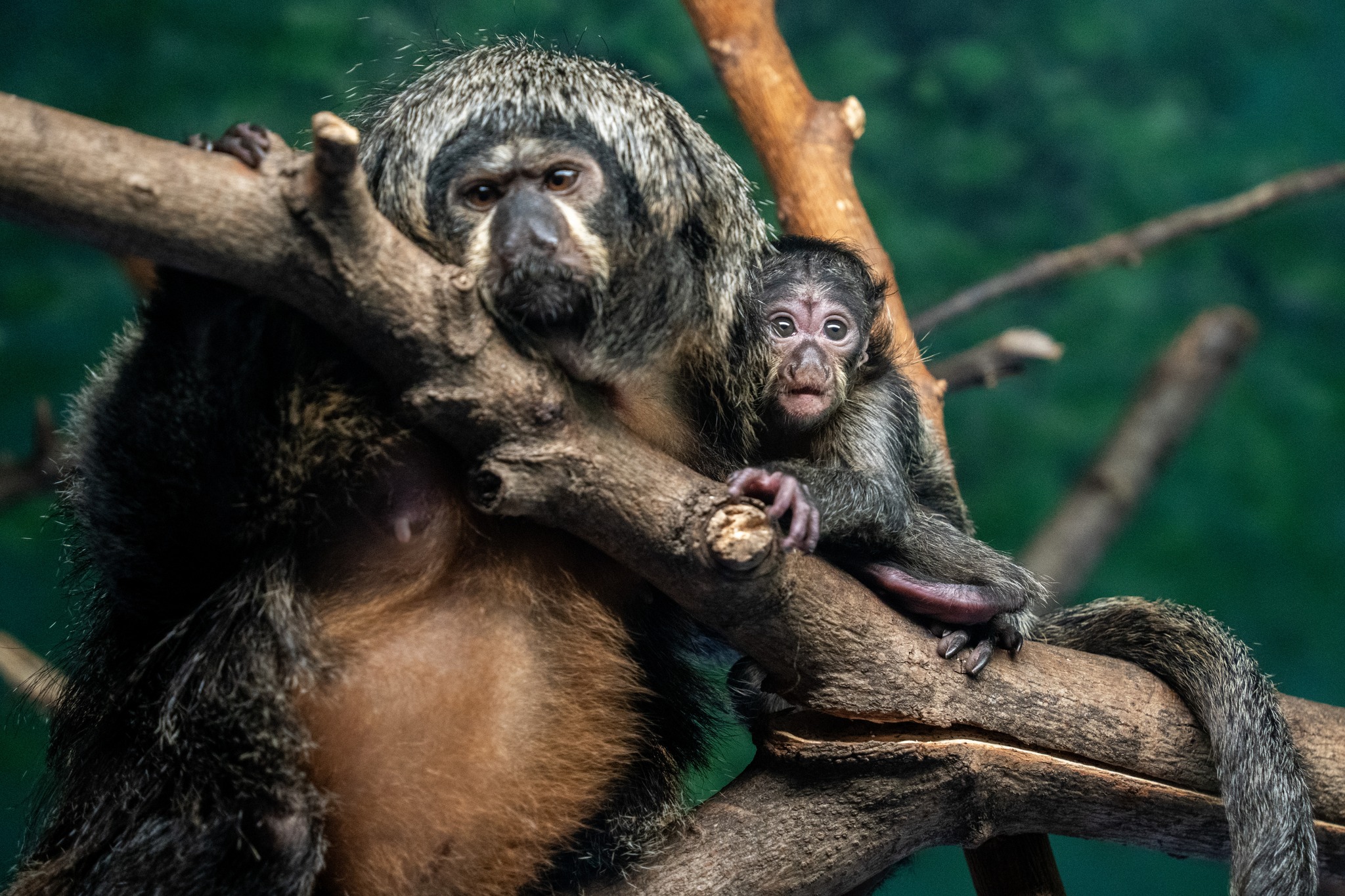- The significance of white-faced sakis in the primate world
- Physical and behavioral characteristics including sexual dimorphism
- Developmental stages of a baby white-faced saki
- Importance of monitoring their growth in captivity
- Conservation efforts and challenges faced by white-faced sakis
White-faced sakis (Pithecia pithecia), also known as Guianan sakis, are small primates found in South America, particularly in countries such as Brazil, Guyana, Venezuela, and Suriname. These fascinating animals play a crucial role in their ecosystems, primarily through seed dispersal, which helps maintain forest health. Observing their development, especially in captivity, gives us valuable insights into primate behavior and biology.
White-faced sakis exhibit sexual dimorphism, meaning males and females have distinct physical differences. Adult males are easily recognizable by their striking white faces, which contrast sharply with their dark fur. In contrast, females and juveniles have more uniformly colored fur. We just can’t get over how cute this baby white-faced saki is! As it grows, observing its coloration will help determine its gender. By around two months, the fur on its face will either begin to lighten, indicating it’s a male, or remain dark if it’s a female.
Taking care of a baby white-faced saki involves understanding their developmental stages. From birth to about two months old, these tiny primates are incredibly vulnerable and depend significantly on their mother for nourishment and protection. During this period, they primarily cling to their mother or ride on her back. Around the two-month mark, we expect to see physical changes such as fur color adjustments, which will help us identify their sex.
As the baby white-faced saki approaches this crucial developmental milestone, we also notice increased adventurous behavior. This young primate begins to explore its surroundings more freely, hopping from branch to branch and trying new foods. This curiosity and playfulness are vital for developing motor skills and social interactions.
Monitoring the growth and behavior of a baby white-faced saki in captivity is significantly important for several reasons. It helps maintain the animal’s health and well-being by providing early indications of any developmental issues. Regular monitoring also contributes to our collective understanding of primate development, enabling zoos and conservationists to improve care protocols.
Conservation of white-faced sakis is a challenging but essential undertaking. These primates face numerous threats in the wild, including habitat loss due to deforestation, hunting, and the illegal pet trade. Conservation efforts often involve habitat protection, anti-poaching measures, and breeding programs in captivity. Breeding programs are designed to create genetic diversity and prepare individuals for potential release into the wild.
Educating the public about white-faced sakis and other primates is a fundamental aspect of wildlife conservation. The more people are aware of these animals and their roles in the ecosystem, the more support there will be for conservation initiatives. Zoo visitors finding the baby white-faced saki adorable helps raise awareness and encourages a connection between humans and wildlife, fostering a sense of stewardship.
In summary, the baby white-faced saki not only captivates our hearts but also embodies significant subjects in primate research and conservation. Observing its development can provide invaluable data that bolsters both scientific understanding and conservation measures. As it grows and becomes more adventurous, we await the moment its fur color will reveal more about its identity within this remarkable primate species.
*****
Source Description
We just can’t get over how cute this baby white-faced saki is! We still don’t know if it’s a boy or a girl, but it’s getting more adventurous, so hopefully we’ll be able to tell soon. At the very least, at about 2 months old, the fur on its face should either start changing color to the white ruff of a male, or stay dark like a female.


